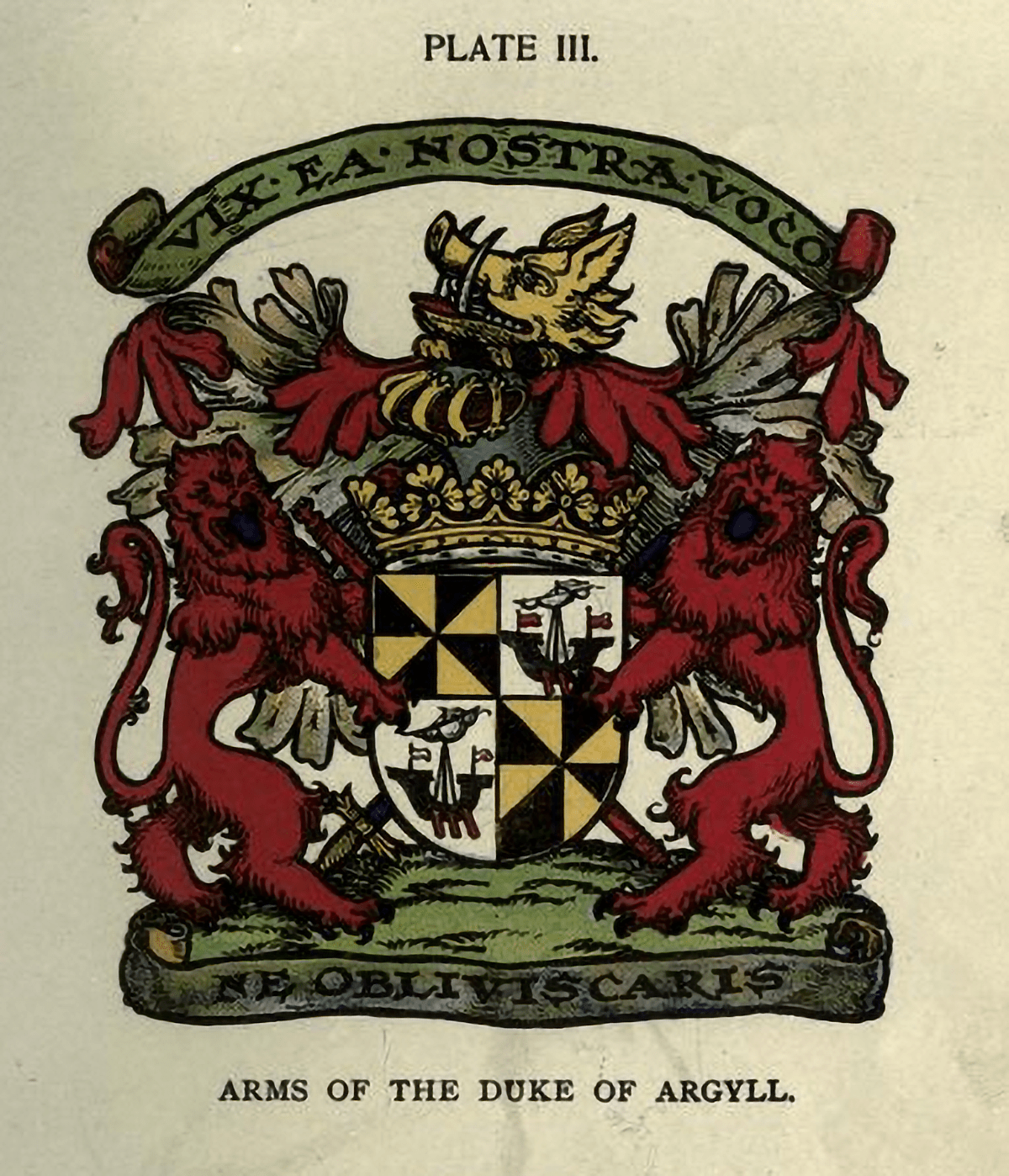
Lions represent bravery, strength, and other related concepts.
Ships represent naval dominance.
Crowns represent nobility.
Boar, a creature that dwelled and still dwells in the area.
I scarcely call these things our own
Forget not
Arms of the Duke of Argyll
See description below.
Author/Artist: Graham Johnston, Herald Painter to the Lyon Court (19th-20th century)
Publisher: T.C. & E.C. Jack
Description: paper, ink
Language: Latin
Repository: A Complete Guide to Heraldry, by Arthur Charles Fox-Davies
Tags: coat of arms, lions, Scotland, swine
The Arms of the Duke of Argyll is a solid case study for looking at heraldry as a form of rebus. It features a more abstract form of rebus than some other pieces of heraldry, but it serves this purpose well. The Latin present translates to “I scarcely call these things our own, forget not,” and the coat of arms is supported by a pair of lions standing on a grassy plane. Other symbols include a pair of ships, a collection of swords, and a boar’s head. At a glance, one may ask: why lions? Why any of this?
On the surface, it’s a somewhat traditional coat of arms: the lions represent bravery, strength, and other related concepts, the ships represent naval dominance, the crown represent nobility, and so on and so forth. But there is a sort of a far-fetched visual pun that is debatably present in this coat of arms: the choice of dividing the escutcheon into approximate square shapes (thus, in a sense, diamonds) could arguably constitute an argyle pattern. “Argyle” is somewhat close to “Argyll,” but there’s far more to this piece of heraldry than that alone.
The coat of arms is Scottish in origin: while lions are a familiar and often key part of western European heraldry, modern lions are certainly not native to Scotland. While the Duke of Argyll’s arms feature a boar, a creature that dwelled and still dwells in the area, the lions are largely foreign. One could argue that “things” that are not the family’s “own” are the lions themselves. Or, perhaps, the grassland in the compartment of the coat of arms could represent land that has yet to be taken by Argyll, or even an admittance that the land Argyll rules over was not always their own, and that it may not always be their own.